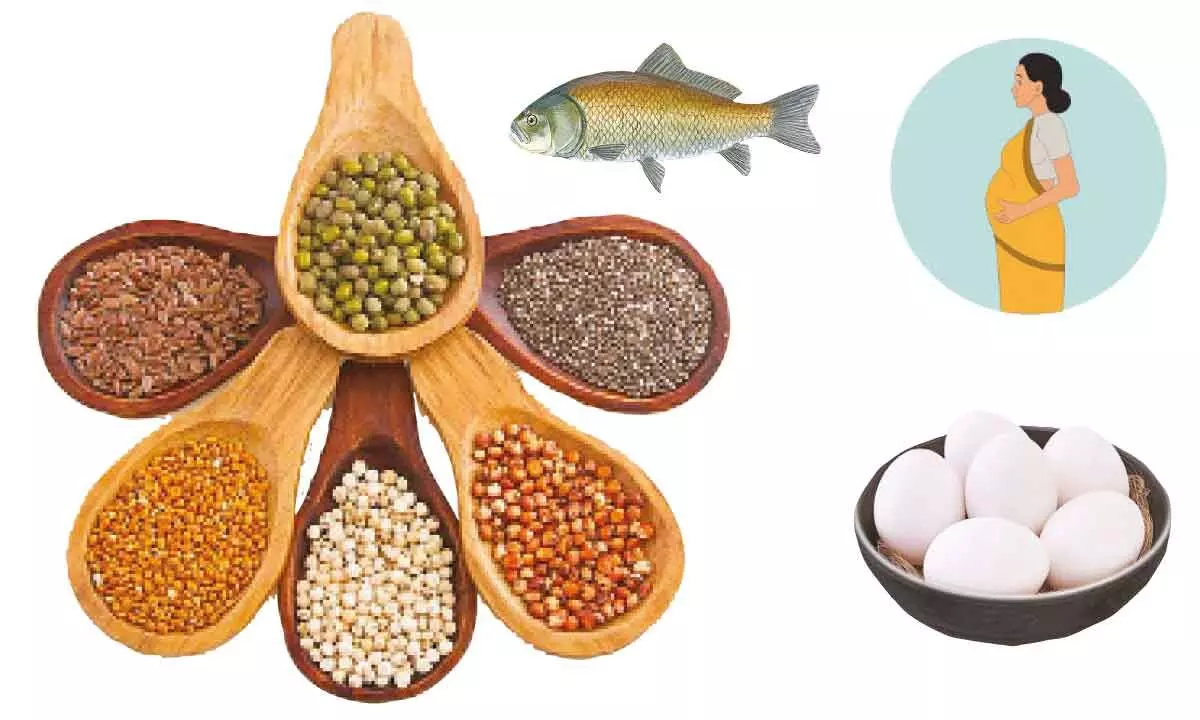To Beat Malnourishment Among Kids... Varied diet holds key to healthy food plate

Underweight, stunting and wasting and actute BMI and anaemia in men, women, school children can be reduced with improvement of the food menu
Hyderabad: A study focusing on the dietary diversification and the crucial role of including millets in the diet menus of Integrated Child Development Services (ICDS), Mid-Day Meal Schemes (MDMS), and urban canteens, specifically in select metropolitan cities of Telangana and Karnataka, reveals that a significant number of children from marginalised communities attending Anganwadi centres and government schools are facing nutritional insecurity. Despite these programmes gaining popularity for increasing school enrollment rates, the issues of malnutrition, including stunting and wasting among children, are prominently observed.
Although per capita income and food grain production are rising, they are not leading to a reduction in nutritional insecurity, says Professor G Sridevi, School of Economics, University of Hyderabad (UoH), the principal investigator of the study.
Although Telangana has shown positive results in distributing millets in its food scheme (ICDS) to children, pregnant and lactating women, the share of ICDS expenditure to the total fund allocation for Women and Child Development is declining. In Telangana, families with anaemia are increasing, along with malnourished children. Children belonging to non-SC, ST, and OBC are suffering from malnourishment in Telangana, especially in Adilabad and Gadwal.
The study reveals that when it comes to nutritional indicators in the diet of ICDS, with 22.8 per cent Hyderabad exhibits moderate stunting, 11.10 per cent moderate wasting, and 2.86 per cent severe wasting. With 20.63 per cent, the city shows moderate underweight and 4.01 per cent severe underweight.
Besides the inclusion of ragi millet in lunch in MDMS, nearly 93.05 per cent of children are underweight. However, canteen initiatives such as Annapurna and Bhojanamitra canteens play an important role in providing food in urban spaces.
At the same time, the beneficiaries of the canteen are willing to pay an additional amount for millets and other nutritious food, particularly an increase of five rupees. Although these schemes are popular, diet diversification is essential with the inclusion of millets and other micronutrient food items. The existing malnourishment can be substantially reduced with the improvement of the food menu, says the study.
Mid-Day Meal Scheme
- The majority (93.05 percent) of students are classified as underweight, highlighting a potential issue with nutritional needs
- Nearly 66.60 percent of students have visited Anganwadi, indicating a positive impact of govt progs
- Only 0.97 percent of students reported receiving breakfast at school, suggesting limited accessibility
Integrated Child Development Scheme
- 75 percent of Anganwadi centres run without regular employees, 12.50 percent have one permanent employee, and the remaining 12.50 percent have two
- Average amount of food supplied by the govt is 1880.25 eggs per AWC, ranges from 980 to 2700 eggs, and 131.625 litres of milk, ranges from 70 to 200 litres per AWC
- Meal reveals that 88 percent of AWC teachers saw food waste, and 62.50 percent of teachers say that recipients took food home
Urban Canteens
- Over representation of male beneficiaries due to women’s limited mobility in search of food or their role as decision makers in household food matters
- Utilised mostly by the working people as a means of cost saving, as they are required to spend only five rupees
- Annapurna canteen serves more males, while Bhojanamitra serves more females. The food menu of Annapurna canteens consists of lunch, while Bhojanamitra offers breakfast, lunch and dinner

